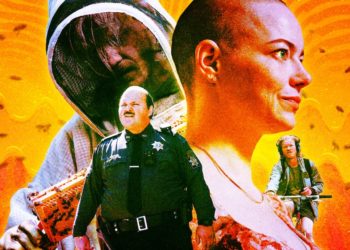BELFAST — A former British soldier who shot unarmed protesters on Northern Ireland’s “Bloody Sunday” 53 years ago has been acquitted of murder in a troubling test case for those still seeking justice for hundreds of unsolved killings.
After a five-week trial decades in the making, Judge Patrick Lynch said the hearsay evidence central to the prosecutors’ case was insufficient to find the ex-soldier guilty of murdering two of the 13 people killed on Jan. 30, 1972, in the Northern Irish city of Londonderry.
Near the end of his three-hour verdict in Belfast Crown Court, Lynch said the accused — a former Parachute Regiment soldier hidden by a blue curtain from public view and identified only as Soldier F — was part of a squad of soldiers who deliberately shot unarmed and fleeing civilians at close range. But he said the evidence didn’t provide specific proof that Soldier F, rather than his comrades, had definitely fired the fatal shots.
Northern Ireland First Minister Michelle O’Neill, whose Sinn Féin party long has campaigned for Bloody Sunday soldiers to be convicted of murder, called the verdict “deeply disappointing.” The failure to convict anyone — 15 years after a mammoth British state inquiry found that the soldiers had killed unarmed civilians without justification — was “an affront to justice,” she said.
The moderate Irish nationalist who represents Londonderry in the House of Commons, Colum Eastwood, agreed. But he stressed that the case had been too dependent on 53-year-old statements provided by two other paratroopers, identified in court as Soldier G and Soldier H. Both also took part in the killings, but “G” is dead and “H” refused to testify on the grounds it would incriminate him.
“The problem with the prosecution was that they were relying on the statements of liars, of former paratroop soldiers,” Eastwood said. “They were lying through their teeth in those statements. That was always going to make it difficult to convict.”
In his judgment, Judge Lynch said Soldiers G and H “are, in effect, just as guilty as F,” but no supporting forensic or other evidence could prove who fired the shots that killed any particular victim. He said both had committed perjury to the original discredited 1972 probe that exonerated all of the soldiers and, in the case of H, to the subsequent fact-finding tribunal that published its conclusions in 2010.
“A 53-year-old statement cannot be cross-examined, nor can I assess the demeanor of a sheet of A4 paper,” Lynch said in explaining why the soldiers’ past testimony to police investigators wasn’t sufficient to secure a conviction of Soldier F.
Passions flared outside the courthouse as military veterans welcomed the verdict — and relatives of the Bloody Sunday dead, standing behind them and waiting their turn to address the media, hurled insults.
“The terrorists in this community murdered 44 soldiers in 1971 and 104 soldiers in 1972. I will ask you, who is the terrorist?” said Paul Young, a medal-chested spokesman for the Northern Ireland Veterans Movement, as those behind him cried “scumbag!” and worse.
“I hope there is no more soldiers brought to the courts here,” Young said over the heckling.
But relatives of the dead and their lawyers said they would press next for perjury charges to be brought against the still-living Soldier H.
“A coward walks free from the dock today,” said Mickey McKinney, whose 26-year-old brother William was among those allegedly slain by Soldier F.
A lead lawyer for the families, Ciarán Shiels, said it had been hoped that securing a conviction of Soldier F would have opened the doors to further prosecutions of retired soldiers guilty of up to 188 killings of Northern Irish civilians from 1970 to 1974, the deadliest years of the conflict.
But Shiels conceded that the chance for successful prosecutions may have died long ago, because the quality of required evidence was never collected at the time.
“He stood trial on a sliver of the evidence that once was available,” Shiels said.
The post Ex-soldier acquitted of 1972 killings on Northern Ireland’s Bloody Sunday appeared first on Politico.




